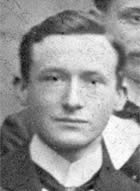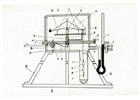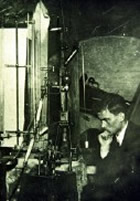|
History - People - R W Gray
Robert H. Whytlaw-Gray FRS (known until about 1905 as Robert W Gray). Whytlaw-Gray is one of the legendary figures of the early days at UCL. Educated at St Paul's School, he studied at Glasgow and UCL, although we have no record of his obtaining a first degree. During his time at UCL, Ramsay set him the task of preparing compounds related to saccharin, the newly discovered sweetener. During an attempted diazotization, the reaction exploded violently. Hearing the bang Morris Travers ran in to find the injured Whytlaw-Gray and took him to the hospital. When Travers went to Gray's house in the evening to check on him, he was admitted to Gray's room by Gray's younger sister, then 14. A respectable eleven years later, Travers married the girl. Having recovered from the accident, Whytlaw-Gray went on to make a series of detailed determinations of the atomic masses of the elements by a method first used by Berthelot which required the very accurate measurement of pV/T measurements. He studied with the great German chemist Anschütz in Bonn, getting a PhD in 1906. He returned to UCL in 1906 where we worked closely with Ramsay and Soddy on the characterization of Radon, the last noble gas to be isolated. His meticulous experimental work culminated in his accurate weighing of 0.0658 x 10-5 cm3 of gas weighing 6.55 x 107 g, an astonishing technical feat which provided the first accurate atomic weight for the new element, 222. The balance he constructed out of quartz is shown below together with a photograph taken in the lab, in days before safety glasses.
He taught at Eton from 1914-23 and then went on to Leeds University where he became Professor of Inorganic Chemistry. He was elected Fellow of the Royal Society in 1928 and retired to Welwyn in 1950.
This page last modified 20 September, 2010 |



